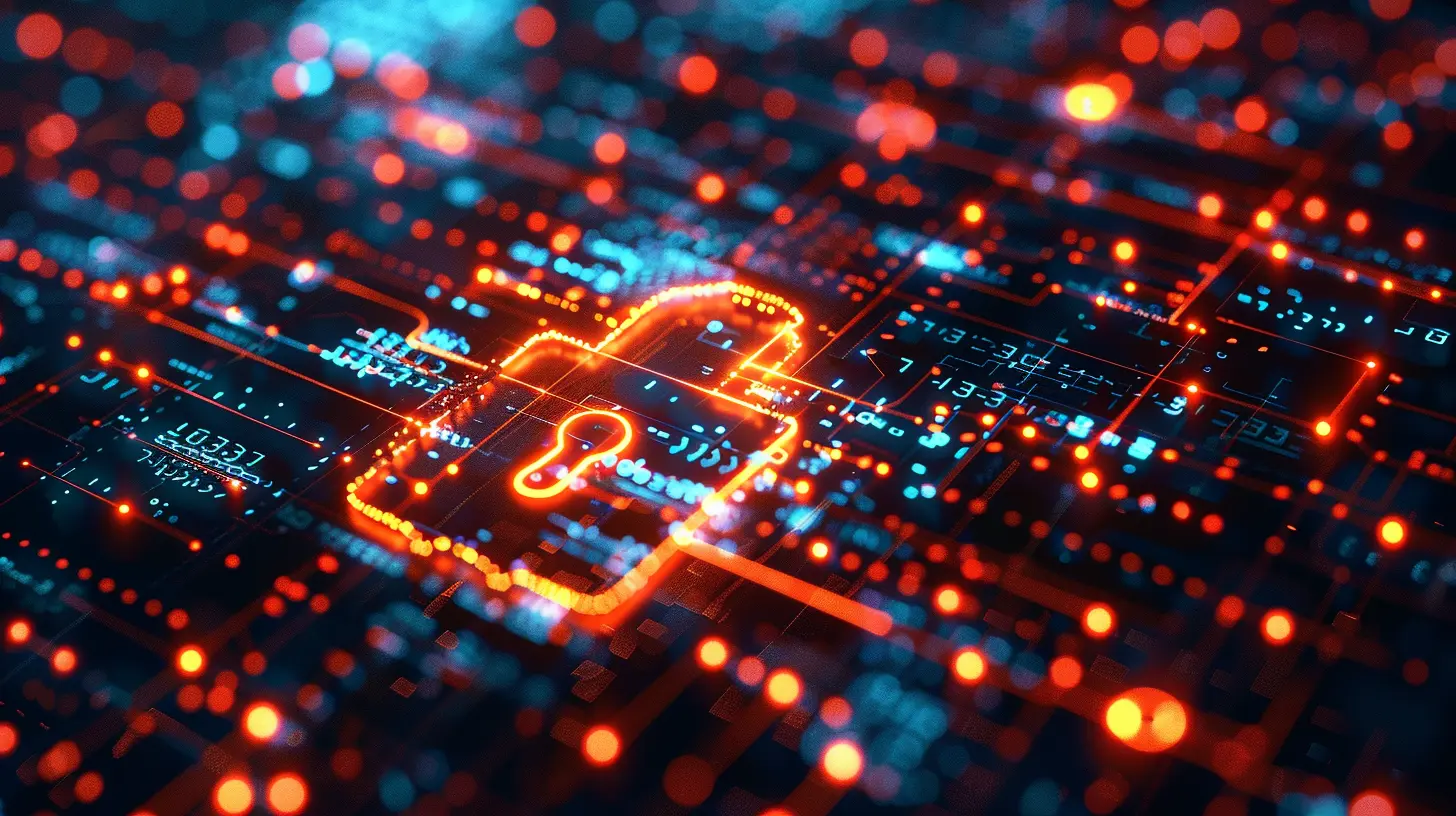Why Zero-Trust Security is the Future of Online Protection
6 April 2025
The digital world is evolving faster than ever, and so are cyber threats. Hackers are getting smarter, attacks are becoming more sophisticated, and traditional security models just don’t cut it anymore. This is where Zero-Trust Security comes in—a revolutionary approach that flips the script on cybersecurity.
Instead of assuming that users inside the network are trustworthy, Zero-Trust assumes that no one can be trusted by default—whether they are inside or outside the organization. It's a game-changer for how we approach online protection.
So why is Zero-Trust Security the future? Let’s dive in. 
What is Zero-Trust Security?
At its core, the Zero-Trust model operates on a simple yet powerful principle: "Never trust, always verify." Unlike traditional security frameworks, which assume that users already inside the network are safe, Zero-Trust continuously verifies every user and device trying to access a system.This means that no matter where a request comes from—inside or outside the organization—it must be authenticated, authorized, and encrypted before being granted access.
But wait… doesn't that sound paranoid? Not really. The reality is that cybercriminals often exploit insider threats, stolen credentials, and compromised devices to infiltrate networks. Zero-Trust Security eliminates these risks by ensuring that every access request is treated as if it could be a potential attack. 
The Problem with Traditional Security Models
For years, organizations relied on perimeter-based security models—think firewalls, VPNs, and password-protected systems. These models worked well when businesses had clearly defined networks with employees working from offices using company-issued devices.But times have changed.
- Remote work is the norm – Employees log in from home, cafes, airports, and co-working spaces.
- BYOD (Bring Your Own Device) culture is rising – People use personal smartphones, tablets, and laptops for work.
- Cloud computing has transformed IT infrastructure – Companies rely on third-party SaaS platforms, cloud storage, and online collaboration tools.
The bottom line? The traditional security perimeter no longer exists. Relying on old-school security is like locking your front door while leaving all your windows wide open. Cybercriminals know this, and they exploit weak points to steal data, disrupt businesses, and even cripple entire industries.
This is exactly why the Zero-Trust model is the future—because it provides security that moves with you, rather than relying on outdated barriers. 
Why Zero-Trust Security is the Future
1. Cyber Threats are More Advanced Than Ever
Hackers aren't just lone wolves hiding in basements anymore. They are well-funded criminal groups, state-sponsored attackers, and sophisticated cyber gangs. They use AI-driven attacks, ransomware, phishing, and credential-stuffing to compromise organizations.Zero-Trust Security limits the damage an attacker can do, even if they breach a system. Because access is strictly controlled and continuously verified, a hacker can’t just waltz in and steal everything.
2. It Reduces the Risk of Insider Threats
Believe it or not, some of the biggest security breaches come from the inside—whether intentional or accidental. Employees with too much access, compromised user accounts, or disgruntled workers can pose serious risks.Zero-Trust ensures that users only have access to what they absolutely need and monitors their activity in real time. If anything suspicious happens, access can be revoked instantly.
3. Remote Work and Cloud Services Demand It
With more businesses embracing remote work and cloud technologies, security must be flexible and adaptable. Employees, vendors, and contractors access systems from all over the world.Zero-Trust works seamlessly across locations, devices, and networks, ensuring that security doesn't depend on a physical office or private network. This makes it perfectly suited for the modern workplace.
4. Minimizes the Damage of Data Breaches
Even the biggest companies can fall victim to cyberattacks. But with Zero-Trust, damage control becomes much easier.Let’s say a hacker somehow gets access to an employee’s credentials. In a traditional security model, that could be disastrous—they might access sensitive data, install malware, or wreak havoc.
But with Zero-Trust, their movement is immediately restricted. They might breach one system, but they won’t be able to move laterally across the network.
5. Complies with Data Privacy Regulations
As data breaches become more common, governments and regulators are cracking down on cybersecurity. Laws like GDPR, CCPA, and HIPAA demand better data protection.Zero-Trust aligns perfectly with these regulations because it limits data access, enforces strict authentication, and logs all user activities. This makes it easier for businesses to stay compliant and avoid hefty fines. 
How Does Zero-Trust Work?
1. Verify Every User and Device
Before granting access, Zero-Trust checks and verifies who you are and what device you're using. It considers:- Identity authentication – Are you really who you claim to be?
- Device trust – Is your device secure and recognized?
- Location verification – Are you logging in from a trusted region?
2. Least Privilege Access
Users only get the minimum amount of access necessary to do their job. No more "superuser" or "admin" privileges unless strictly needed.3. Continuous Monitoring and Logging
Instead of just verifying users once at login, Zero-Trust constantly monitors activity. If something unusual happens, security teams can take immediate action.4. Micro-Segmentation
Networks are divided into small, secure zones. Even if a cybercriminal breaches one area, they can’t access the entire system.5. Multi-Factor Authentication (MFA)
A password alone isn’t enough. MFA requires multiple forms of verification—like a password + a fingerprint or an authentication code on your phone. This makes it much harder for attackers to break in.Final Thoughts
The world has changed, and cybersecurity needs to keep up. Traditional security models simply can’t handle modern threats, remote work, and cloud-based systems.Zero-Trust Security is the future of online protection because it provides the highest level of security without relying on outdated assumptions. It minimizes cyber risks, controls access, and ensures that only the right people can reach sensitive data.
In short, if you care about keeping your data, systems, and users safe, Zero-Trust isn’t just an option—it’s a necessity.
all images in this post were generated using AI tools
Category:
CybersecurityAuthor:

Gabriel Sullivan
Discussion
rate this article
8 comments
Nym Vance
Embracing zero-trust security is like putting your online life in a protective bubble! 🌐✨ It’s all about trusting no one and checking everything—think of it as the ultimate digital bouncer for your data's house party! 🎉🔐
April 25, 2025 at 12:57 PM

Gabriel Sullivan
Absolutely! Zero-trust security is essential for safeguarding our digital lives by ensuring every access attempt is verified, just like a vigilant bouncer at a party. Your data deserves the best protection! 🎉🔐
Easton Kirk
Zero-trust security offers a proactive approach to online protection by verifying every user and device. While its implementation can be complex, the enhanced security it provides is crucial in today’s threat landscape.
April 18, 2025 at 2:27 AM

Gabriel Sullivan
Thank you for your insight! You're absolutely right—zero-trust security is essential for safeguarding against evolving threats by ensuring that all users and devices are continuously verified.
Zander Morales
Understanding zero-trust security is crucial for safeguarding our digital lives. Your insights are invaluable.
April 15, 2025 at 6:34 PM

Gabriel Sullivan
Thank you! I'm glad you found the insights valuable. Zero-trust security is indeed essential for enhancing our digital safety.
Zailyn Duke
Great insights! Zero-Trust is truly pivotal for online safety.
April 12, 2025 at 11:49 AM

Gabriel Sullivan
Thank you! I’m glad you found the insights valuable. Zero-Trust is indeed essential for enhancing online safety.
Fatima Richardson
While the zero-trust security model addresses growing vulnerabilities, it’s crucial to recognize its implementation challenges. Organizations must balance robust security with user experience, as overly stringent measures can hinder productivity. A nuanced approach that integrates zero trust with existing frameworks may be key to effective and sustainable online protection.
April 11, 2025 at 6:48 PM

Gabriel Sullivan
Thank you for your insightful comment! Balancing security and user experience is indeed vital for successful zero-trust implementation. A nuanced approach can help organizations safeguard their assets while maintaining productivity.
Gemma McKibben
Zero-trust security fundamentally shifts the paradigm by assuming breaches can occur. By continuously verifying identities and limiting access, it enhances protection against evolving threats, making it essential for modern cybersecurity strategies.
April 11, 2025 at 4:34 AM

Gabriel Sullivan
Thank you for your insight! I completely agree—zero-trust security is indeed crucial for adapting to today’s evolving cybersecurity landscape.
Morrow McInerney
Zero-Trust Security is essential for today's digital landscape, where threats are constantly evolving. By assuming that no user or device can be trusted by default, organizations significantly enhance their defenses against breaches and data leaks.
April 9, 2025 at 4:38 AM

Gabriel Sullivan
Thank you for your insightful comment! Zero-Trust Security indeed plays a crucial role in strengthening defenses against evolving threats in today's digital landscape.
Tessa Jones
Interesting insights! How will zero-trust adapt to evolving cyber threats in 2024?
April 7, 2025 at 2:37 AM

Gabriel Sullivan
Thank you! Zero trust will evolve by integrating advanced AI for threat detection and adapting to real-time data, ensuring a proactive response to new cyber threats in 2024.
MORE POSTS

The Role of SASE in Strengthening Cloud Security

How to Build a Secure Cloud Migration Strategy

Smart Cities: The Role of IoT in Shaping Urban Living

How Augmented Reality is Shaping the Future of Personal Training

How IoT is Changing the Face of Indoor Farming

Understanding Shared Responsibility in Cloud Security